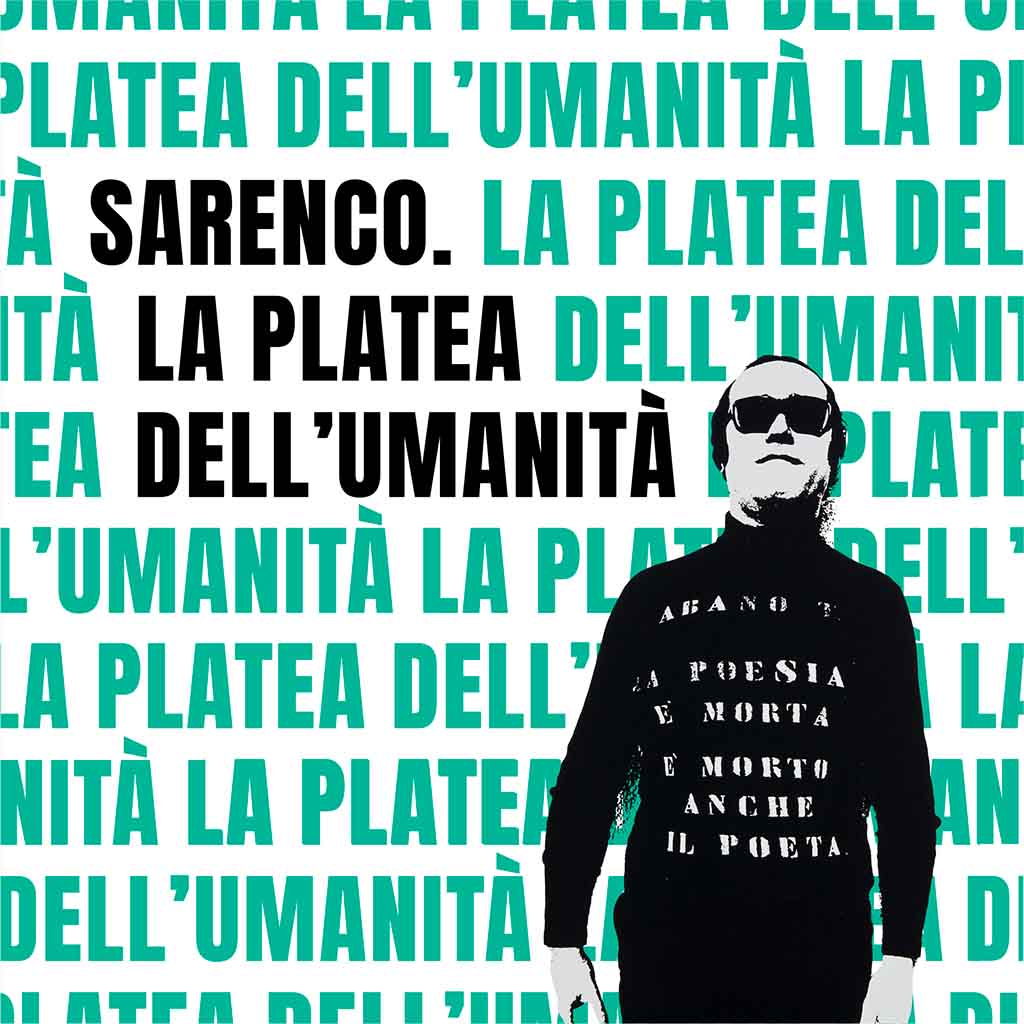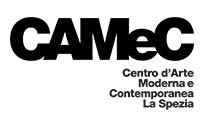
SARENCO
SARENCO, whose “stage” name derives from the acronym “SAskia Retourne ENCOre”, a homage to a fleeting but intense love-story from his youth, was an extraordinary interpreter of the 20th-century international art scene, as well as one of the main, certainly the most charismatic, exponents of Visual Poetry on a world level. Sarenco (whose real name was Isaia Mabellini) is a nom de guerre, a fighting name under whose flag he aimed to combine the expressive unity and the poetic identity of a rebel against the establishment and the dominant culture.
He was a brilliant, ironic, fascinating, also mocking, irreverent and acutely unconventional artist, but also a formidable performer, tireless explorer, explosive director, implacable exo-publisher, daring photographer, as well as a protean organiser of cultural events in Italy and abroad. Besides this, he was a multi-faceted, eclectic protagonist of the most important international art exhibitions and shows: the Venice Biennale, the 1972 Documenta 5 of Kassel, the MoMA of New York, the Stedelijk Museum of Amsterdam, the Centre Pompidou of Parigi, the Mart of Rovereto.
Sarenco was in all respects an intellectual warrior of rare wisdom, unpredictable and captivating, whose cultural interventionism arose from an extremely clear, far-sighted vision the final aim of which was the pursuit of so-called “Total Poetry”. Sarenco’s idea was to demonstrate to the world that nothing could be creatively denied to poets: neither painting nor sculpture, pottery nor performance, concerts nor theatre, video nor cinema. Hence in fact the concept of Total Poetry, pursued through his very personal, singular, synaesthetic “Poetic struggle”.
The exhibition itinerary comprises around 170 works representing a 50-year career. Alongside these are bibliographical and archive images and documents which reveal the particular historical period he lived in (exo-publishing magazines, posters, photos, flyers etc.), many of which are extremely rare and some of which are shown for the first time.
A riot of works, from the 1963 visual/poetic projects, Traditi (Betrayed) , Grande Strage (Large Massacre) , Finalmente l’Avanguardia (At last the Avant-garde), governed by the force of Futurist free-speaking and the graphic echoes of Mallarmé; moving on to the emulsified, ironic and revolutionary canvases such as Il popolo è forte armato vincerà (The people are strong, if armed they will win) or Avanti o popolo alla riscossa (Forward oh people to reclaim your rights), in which Giotto’s praying angels in the Scrovegni Chapel of Padua are transformed into a choir singing the Italian words of the Red Flag anthem. Another sublime example is the cycle of works in which Sarenco ironises on the “still lifes” [t/n: “dead natures” in Italian] of Giorgio Morandi, mocking their freshness and originality with plays on words such as Più morta che natura (More dead than nature), Mors tua natura mea [t/n Your death is my nature, a distortion of Mors tua vita mea], Morituri te naturant [t/n a distortion of Morituri te salutant]. These are followed by the collages and assemblages of the ‘70s on, such as Poetical Licence and the cycles Tabù (Taboo)and Tempo (Time); then the large installations such as I mei poeti (My poets), four huge white sculptures of Apollinaire, Breton, Marinetti, Tsara, representing the infinite stature of poetry; or the Autoritratti africani (African self-portraits), ironic and mocking. Then comes the cycle of works linked to the portraits of the Red Indian Poetesses of the Sioux, Apache, Comanche, Navajo tribes and generally of all the native peoples of America, which allude to the absolute sense of freedom and emancipation in the face of all conditionings of every era and degree. Finally, the cycles of works Il Poeta è nudo (The Poet is naked), Solo come un poeta (Lonely as a poet) and Andiamo a scuola (Let’s go to school) give clear evidence of Sarenco’s obstinate rejection of homologation throughout his existence; he was always ready to testify to the deep sense of life through poetic, creative, revolutionary, provocative and irreverent action.
He was born Isaia Mabellini (Vobarno, 1945 – Salò, 2017). A visual poet, performer, explorer, director, editor, photographer, organizer: one of the most talented, active, unpredictable, and explosive figures in contemporary art in Italy and the world.
He attended the ‘Arnaldo’ classical high school in Brescia and studied philosophy at the University of Milan. In 1961 he began to write his first linear poems. Starting in 1963, he began to research visual poetry, making his first contact with artists in ‘Gruppo 70’, which he officially entered the following year. His contribution to the movement was marked by the scratching, caustic tone with which he developed epigrammatic texts, which he associated with various images from the worlds of communication and art. Using the techniques of collage, assemblage, or emulsified canvas, he thus created works with a strong impact, which he used as an instrument of political and cultural struggle. In 1965 he started to exhibit his work, with more than 50 personal and 1000 collective exhibitions in his portfolio.
He conducted intense editorial and organizational activities. He founded magazines such as Amodulo in 1968 and Lotta Poetica in 1971, and publishing houses such as Edizioni Amodulo in 1969, SAR.MIC in 1972, and Factotum Art in 1977.
He founded groups such as the Gruppo Internazionale di Poesia Visiva (or Gruppo dei Nove) and Logomotives. Starting in 1982, Sarenco undertook numerous trips to Asia and Africa, investing new energy into his creations, as always charged with irony. From that moment on, the African continent became the protagonist of his artistic production. He organized four editions of the International Art Biennial of Malindi in Kenya (2006, 2008, 2010, 2012).
He wrote his first screenplay in 1968, which he would then film in 1984 with the title Collage. He was invited to present the film at the Venice Film Festival the following year. Other full-length films would follow. He published more than 40 books and made 15 films.
He was a regular participant in important international art reviews, including four editions of the Venice Biennial (1972, 1986, 2001 — curated by Harald Szeemann with a personal room — and 2011), Documenta Kassel (1972), the Seville Biennial (2004, together with Cattelan), Stedelijk Museum in Amsterdam (1970), Centre Pompidou in Paris (1989, 1994), Museum of Modern Art in New York (1986), MART in Rovereto (2007-2013-2015), and Museo del Novecento in Milan (2013).
Exhibition promoted by
Municipality of La Spezia
Mayor and Councillor for Culture, Pierluigi Peracchini
Manager for Cultural Services, Rosanna Ghirri
and produced by
CAMeC Centro Arte Moderna e Contemporanea (Centre of Modern and Contemporary Art)
with the support of
Fondazione Sarenco
President, Oriano Mabellini
Director, Daniela Mabellini
whit the contribution of
COOP Liguria
curated by
Giosuè Allegrini
technical-scientific direction
Eleonora Acerbi
registrar
Cristiana Maucci
coordinate image and catalogue graphics
Claudia Capelli
exhibition graphics
Sarah Fontana
press office
Luca Della Torre, Municipality of La Spezia
CSArt – Comunicazione per l’Arte
Ufficio stampa
Comune della Spezia
Luca Della Torre | Tel. +39 0187 727324 Email: ufficiostampa@comune.sp.it
CSArt Comunicazione per l’arte
Chiara Serri | Tel. +39 348 7025100
Email: chiara.serri@csart.it
